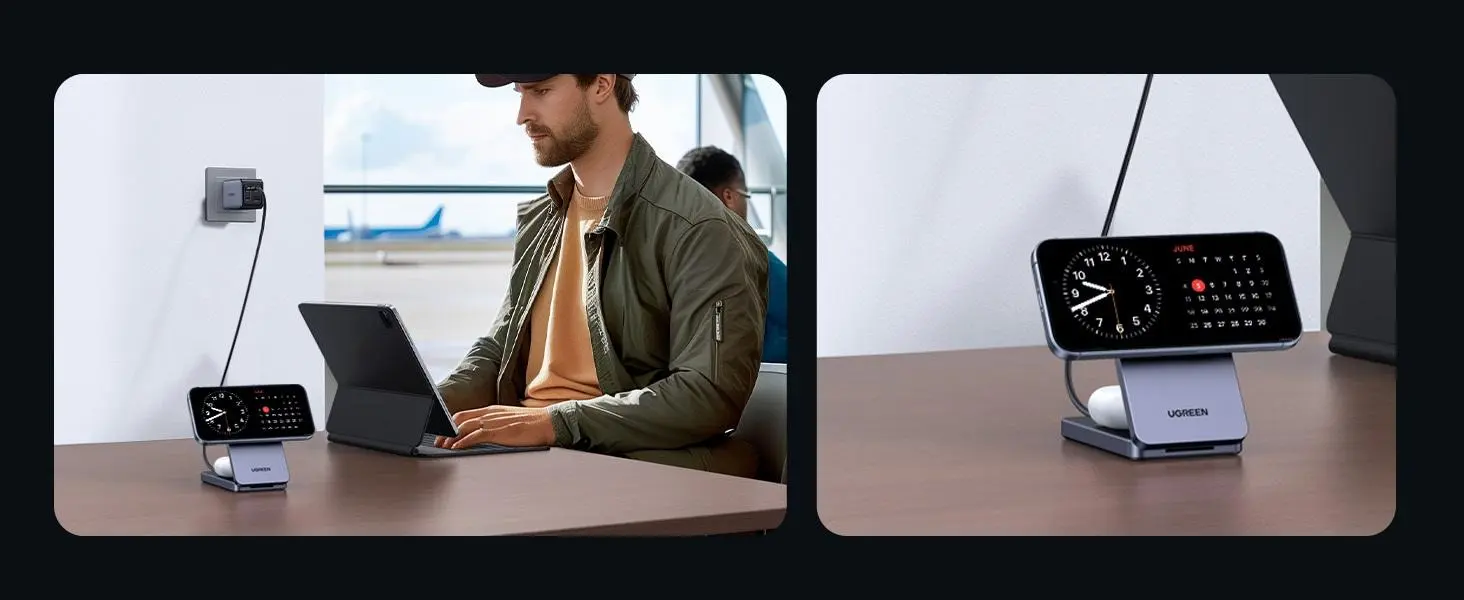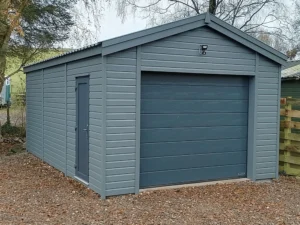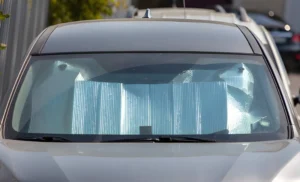Wireless charging has revolutionised the way we power our devices—no more tangled cables, no more fumbling for the right plug. But as convenient as it is, many users face the same frustrating issues: slow charging speeds, overheating phones, and half-full batteries even after charging overnight.
This has left people stuck between two choices: the fast and reliable performance of a power bank with cable charging, or the easy, cable-free experience of a wireless power bank. Both options have their merits, but can you really have both speed and convenience without the downside?
The answer is yes—with the right setup and a few smart techniques. In this guide, we’ll explore six practical tips to make wireless charging faster and cooler, while helping you choose the right device for your needs.
Why Is Your Wireless Charging So Slow—and So Hot?
Picture this: you place your iPhone on a wireless power bank and walk away. Two hours later, your battery has only climbed to 50%. Worse still, the phone feels unusually warm to the touch.
This isn’t uncommon. Wireless charging is sensitive to positioning and distance. If the phone is misaligned or the case is too thick, efficiency drops. Higher wattage adds speed but also generates more heat—triggering the device’s built-in thermal protection, which slows charging down once temperatures exceed 40°C.
Compare that to wired charging using a traditional power bank, where you might get a full charge in 2 hours—wireless often takes twice as long. Mistakes like charging through thick cases or placing the power bank on a bed or blanket only make things worse.
Choosing the Right Devices: What to Look for in a Wireless Power Bank
Your charging experience starts with good hardware. For everyday use, a wireless power bank with 10,000mAh is usually sufficient. If you’re a heavy user or travelling, 20,000mAh offers more flexibility.
Look for a power output of 15W wireless and 22.5W wired. This combo covers both fast wireless charging and emergency wired top-ups. Built-in fans improve cooling but add cost and bulk. Aluminium alloy casings provide passive heat dissipation and are generally more durable.
When shopping for a power bank, check for proper certification such as CE, FCC, or RoHS. Avoid no-name brands that lack safety protection. In Europe, reasonable prices for these devices range from €20–€40 for entry-level models and €50–€80 for mid to high-end options.
Also look for:
- LED battery indicators
- Anti-slip pads
- Multi-device compatibility with USB-A and USB-C ports
How to Double the Efficiency of Your Wireless Charging
Even the best wireless charger can underperform if used incorrectly. These techniques can make a real difference:
- Phone Case Thickness: Cases over 3mm can significantly reduce efficiency. Use a slim case or go without one while charging.
- Perfect Alignment: Make sure the phone is centred on the charging coil. A “beep” or vibration usually signals correct placement.
- Ambient Temperature: Charging in hot conditions causes heat buildup. Use air conditioning in summer and avoid direct sunlight.
- Timing Matters: Charge between 20% and 80% battery for optimal speed and minimal heat.
- Surface Stability: Place the power bank on a firm, flat surface—not a bed or pillow—to aid heat dissipation.
- Regular Cleaning: Dust and grime can interfere with contact. Wipe the charging surface weekly with a soft cloth.
With these small changes, you can cut wireless charging times noticeably—even approaching wired speeds under ideal conditions.
Keeping Things Cool: 6 Ways to Reduce Heat During Charging
Heat is the biggest enemy of both battery health and charging speed. Here are six ways to keep temperatures down:
- Remove the Case: Taking off your phone case can instantly improve heat dissipation and boost charging speed by up to 20%.
- Choose the Right Spot: Place your setup on a well-ventilated table, away from heat sources like laptops or radiators.
- Active Cooling: If your budget allows, invest in a wireless power bank with a built-in fan. Look for quiet models suitable for night use.
- Interval Charging: Try charging in 30-minute sessions with short breaks in between. This helps avoid thermal throttling.
- Environmental Control: Use your devices in cooler environments—an air-conditioned room in summer or away from heaters in winter.
- Material Matters: Metal-bodied power banks dissipate heat more efficiently than plastic, though they tend to be heavier.
- Vertical Angle Advantage: Upright charging stands may offer better airflow than flat pads—but check for stability.
With a few thoughtful tweaks, you can enjoy wireless charging without worrying about overheating.
Best Charging Strategies for Different Scenarios
Different environments require different approaches. Here are our suggestions for optimised charging on the go:
- Office: A desktop wireless power bank keeps your phone topped up while you work, reducing “low-battery” anxiety.
- Bedroom: Choose a quiet, low-light model and place it at least 30cm from your bed. Avoid bright LEDs or loud fans.
- Business Travel: Bring a power bank that supports both wired and wireless charging to adapt to any situation.
- Car Commutes: Use a car mount with wireless charging to power your phone while navigating.
- Coffee Shops: A compact wireless power bank fits easily on small tables, keeping things neat while you work.
- Outdoor Adventures: A solar-powered wireless charger gives you off-grid flexibility with eco-friendly recharging.
Customising your gear by use case ensures you always stay powered—without hassle.
Quick Fixes to Common Wireless Charging Problems
Even well-designed systems can encounter problems. Here’s how to troubleshoot the most frequent issues:
- Slow Charging: Check phone case thickness, clean the surface, and confirm the power bank supports your phone’s fast charging protocol.
- Excessive Heat: Stop charging immediately. Move to a cooler space and check for airflow.
- Charging Stops Intermittently: Likely a misalignment issue. Re-centre the device carefully.
- Wireless Power Bank Not Working: Ensure it has enough battery. Many need a power button press to activate wireless mode.
- Compatibility Issues: Make sure your device supports wireless charging and has the latest firmware updates.
- Decreased Efficiency Over Time: Calibrate your battery regularly and avoid fully draining the power bank.
- Safety Warning: If you notice a burning smell, swelling, or visible damage—stop using the device immediately.
Proactive maintenance and careful use can extend both charging speed and battery life.
Conclusion: Building the Ideal Wireless Charging Experience
In the end, achieving efficient and safe wireless charging comes down to three things: choosing the right equipment, applying proper techniques, and managing heat. A traditional power bank offers fast, direct energy transfer, while a wireless power bank adds convenience for casual use and travel.
Adapting your habits—like removing thick cases, charging at the right time, and keeping your environment cool—can bridge the performance gap between wired and wireless charging.
With proper setup and a bit of know-how, your wireless charging solution can last 2–3 years and deliver consistently strong performance across multiple devices and environments.
Also Read-Kickstart Your Tech Career with a Diploma in Information Technology at Sigma










